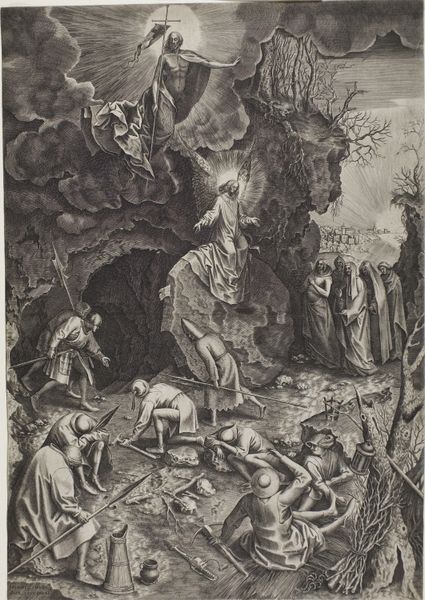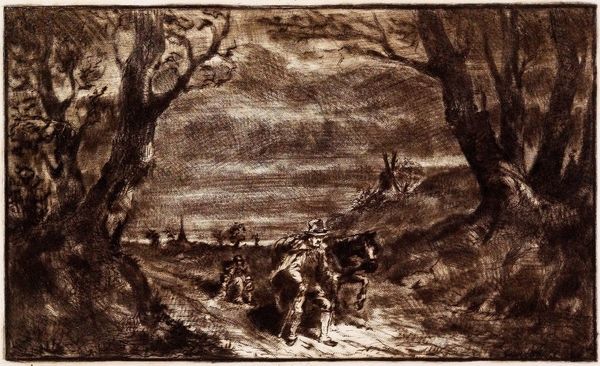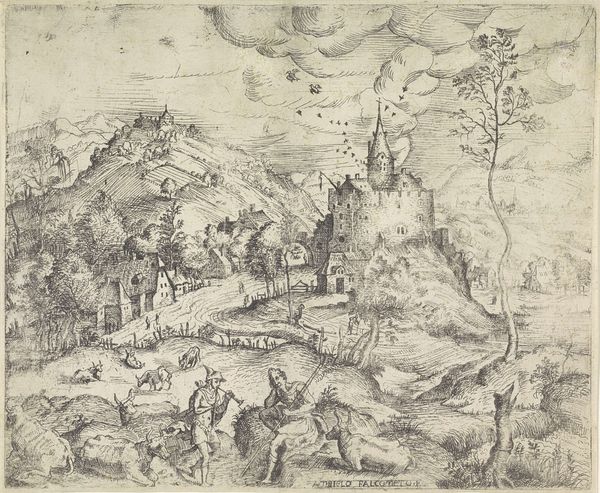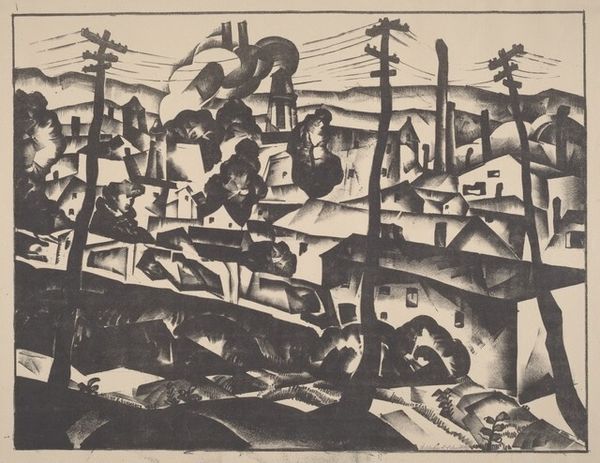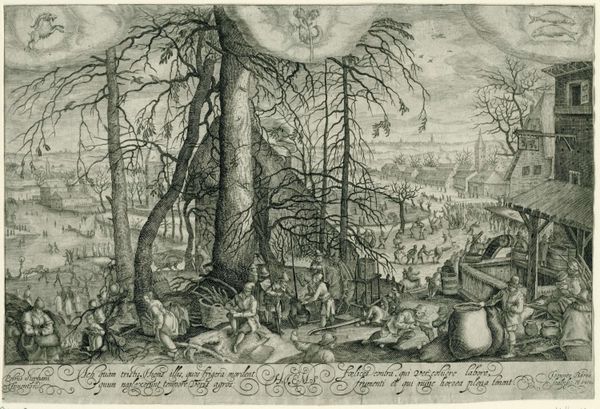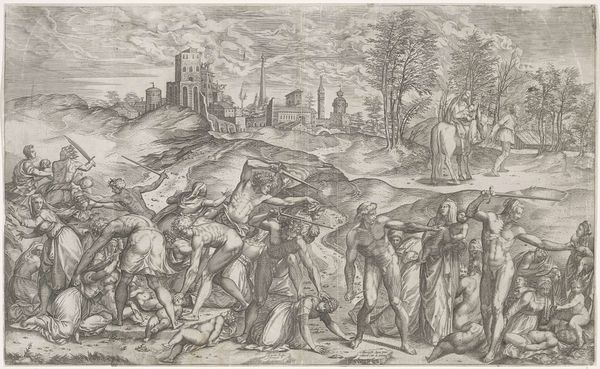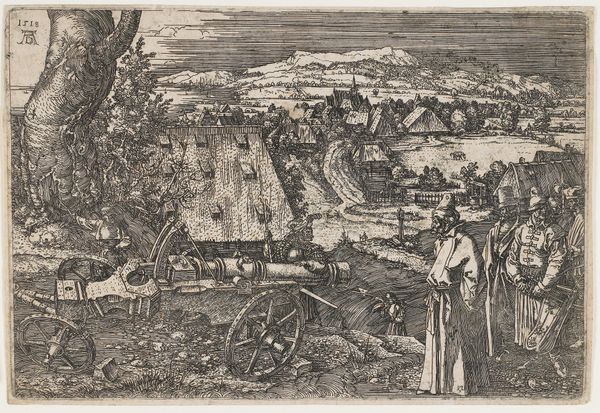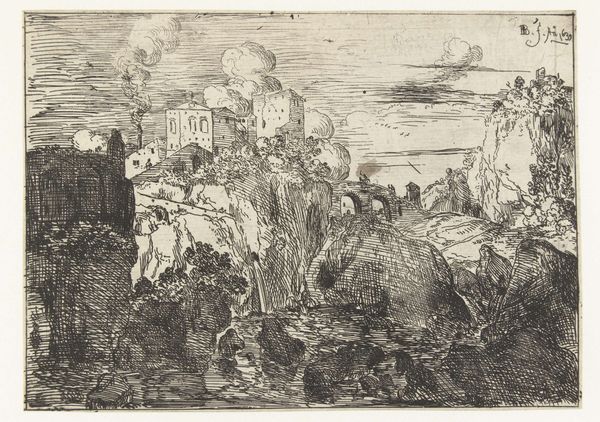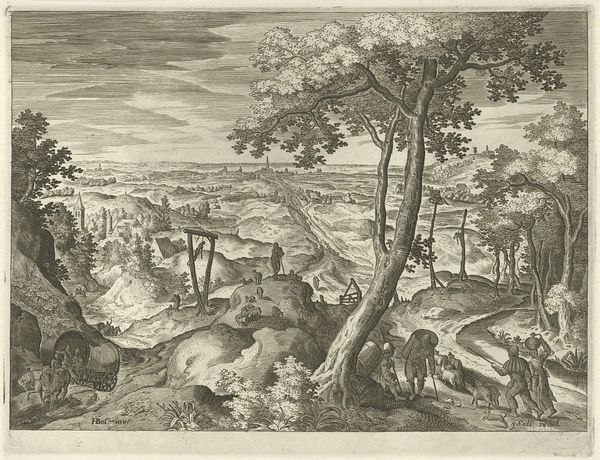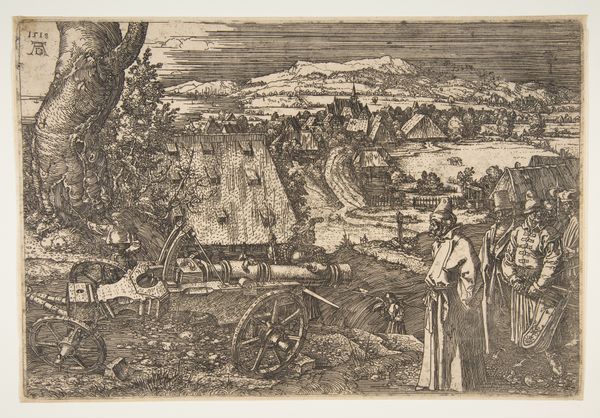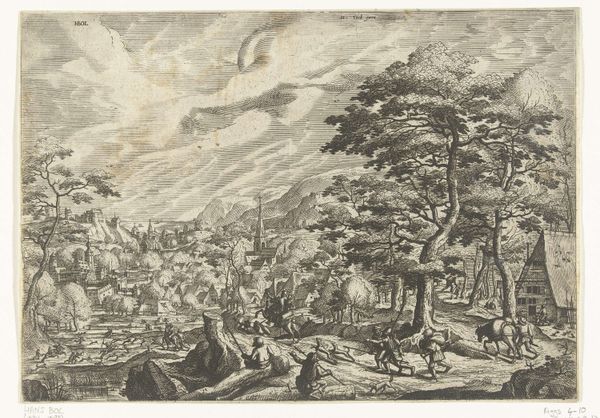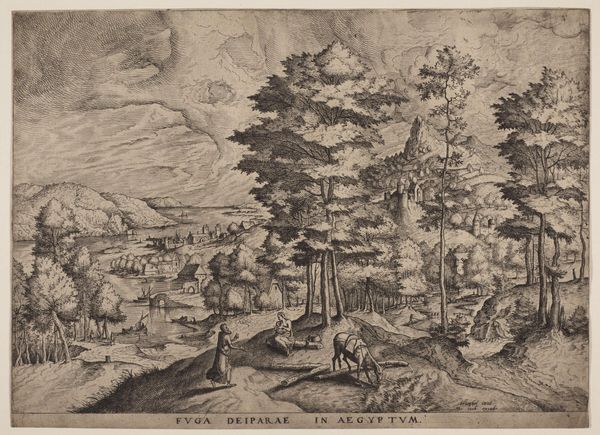
oil-paint
#
oil-paint
#
landscape
#
house
#
mannerism
#
figuration
#
oil painting
#
mountain
#
water
#
cityscape
#
genre-painting
#
history-painting
#
northern-renaissance
#
realism
Dimensions: 118 x 163 cm
Copyright: Public domain
Editor: So here we have Pieter Bruegel the Elder's "The Gloomy Day," painted in 1565, using oil on panel. It feels, well, rather bleak, doesn't it? You can almost feel the damp cold. What can you tell me about this piece? Curator: Notice how Bruegel represents the peasants' lives? He gives prominence to their labor. The people aren't idealized, it's an honest portrayal of their daily grind. He represents their labor as inherently linked to the environment’s own cycles, but where is the dignity in such material hardships? What does the portrayal of work communicate about the social status of the peasant class, and the consumption of their labor by a wealthy patron? Editor: So you're saying it's less about the gloomy weather and more about the gloominess of the peasants' lives? Curator: Precisely! He represents a particular material reality. Bruegel doesn’t just depict peasants; he places their activities – chopping wood, tending animals, and simply existing in this harsh environment – at the heart of the work. Do you see that? It makes me question who exactly will view, own, and derive value from a work like this that celebrates what others may disparage. It makes you reconsider traditional hierarchies between high art and everyday life, doesn't it? Editor: It certainly does. So it's less about the aesthetic beauty, and more about making you think about class, labor and economics? Curator: Indeed! That the painting, the physical object itself, is born of this same world of commerce and labor. Consider how it will circulate and be valued. Editor: I never would have thought of it that way! I see the painting, and Bruegel's overall project, in a completely new light. Thank you. Curator: You're very welcome! There's a lot to unpack when we examine art through the lens of material and social production.
Comments
No comments
Be the first to comment and join the conversation on the ultimate creative platform.

